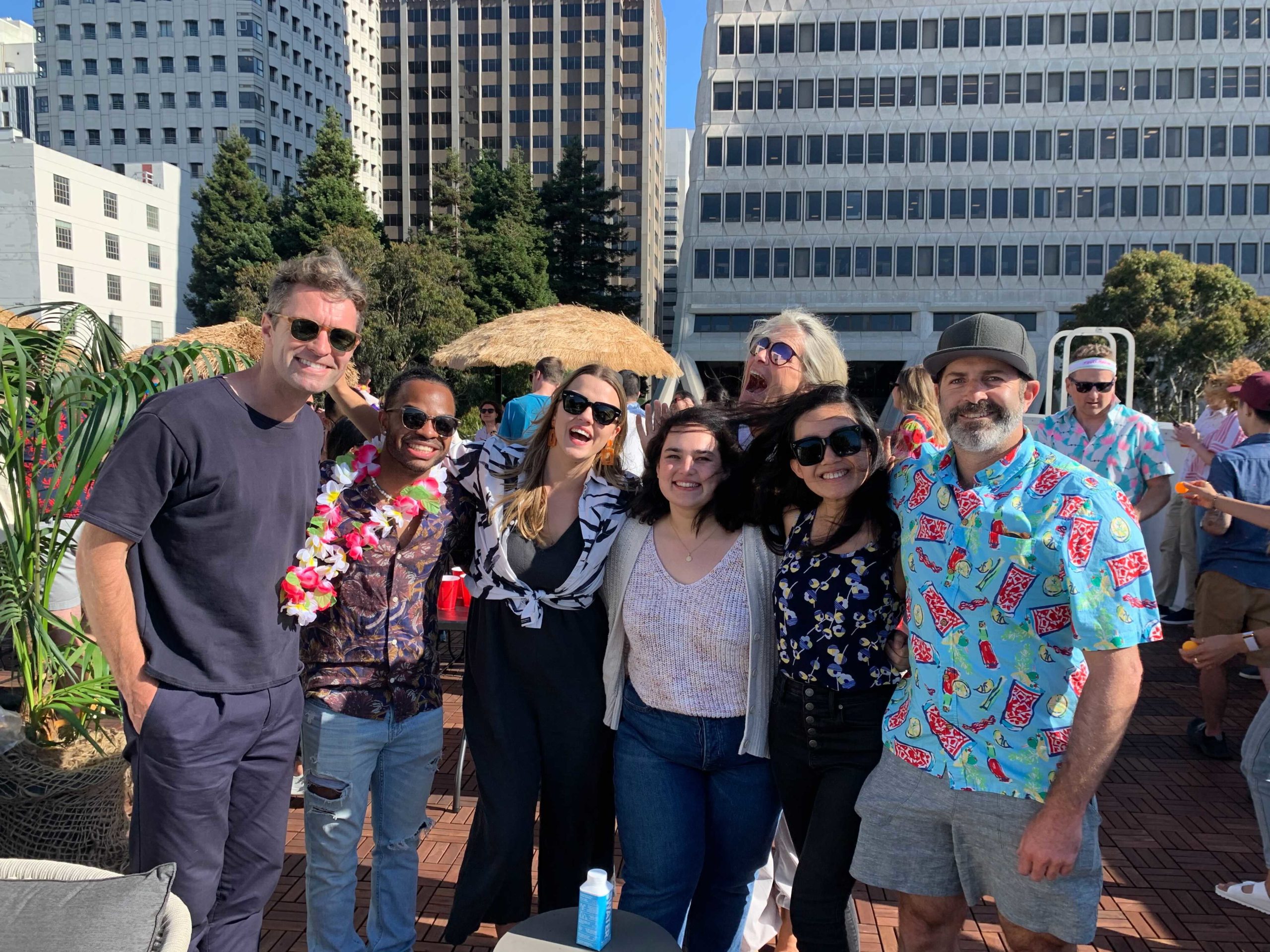The Sustainability and Human Rights Story Behind Your Jeans

Shanna Hoversten, CRB Student Advisory Board & MBA/MPH ‘17
I am a long-time Levi Straus & Company (LS&Co.) customer. As a Bay Area native, I’ve visited the company’s flagship store in San Francisco countless times, and more than half the jeans in my closet are Levi’s. I also have a strong interest in sustainability. And yet, in all my years of shopping at Levi’s I had never made the connection between my love of their jeans and their stellar sustainability record as a company.
Last week in Professor Robert Strand’s class Strategic & Sustainable Business Solutions (co-taught by Glen Low) I had the chance to learn more about that connection firsthand. The class was visited by Michael Kobori, LS&Co.’s VP of Sustainability, who gave a lecture on human rights in business and then opened up the forum for student questions about why and how LS&Co. has become such a strong leader in the sustainability space.
Clearly other students were also new to the connection between their favorite pair of jeans and LS&Co.’s strong environmental and human rights records, because one of the first questions out of the gate was about why the company doesn’t seem to make their sustainability record a big part of their branding or marketing. In response, Kobori explained the market research showing that the vast majority of Levi’s consumers won’t pay more for a ‘sustainable’ product; with all else held equal, greater sustainability may tip the balance in that product’s favor, but it’s not going to be the deciding factor.
In response to this, the cynical part of me has to ask: if there’s no preferential treatment given by consumers, then why would LS&Co. invest in becoming a market leader in sustainability?
According to Kobori, there are a number of really powerful reasons. First, there are the win-win initiatives that both improve sustainability AND save costs or improve productivity or operational efficiency. For example, Levi’s rolled out the Worker Wellbeing Program, a human rights initiative targeted at improving the lives of apparel workers in 12 of the countries Levi’s has contract manufacturing in. Not only does the program lead to significant positive changes in the lives of the apparel workers, but it also has positive financial returns for Levi’s as a result of less employee absenteeism and turnover, and other productivity gains.
Kobori explains that a second competitive advantage associated with a strong sustainability focus is the innovation it can inspire. This kind of innovation happens regularly with products, but it can happen in terms of business models. Levi’s prides itself in making jeans that last for 100 years – a great sustainability win when you consider how much waste this has the potential to divert. But the tradeoff associated with this durability could be significant if customers no longer need to buy new jeans. But Levi’s sees this challenge as an opportunity to innovate on their business model; they’re thinking about ways to add value to their customers through additional services (e.g., tailoring shops) – not just products.
Finally, Levi’s invests in sustainability for the simple reason that those values are an essential part of the ethos of the company – dating all the way back to the company’s founding 163 years ago. As Kobori says it, Levi’s has always believed in “profits through principles”.
During Kobori’s lecture, one student wonders aloud whether keeping tabs on human rights violations in factories located in developing countries is too difficult to be feasible. Kobori quickly sets the record straight: “at the end of the day it is a business decision.” In his view, upholding human rights standards in contract manufacturing may cost money, but if your business decides that human rights are a priority, it can certainly be done. Kobori explains that Levi’s conducted research into the apparel industry’s problem with worker deaths caused by factory fires. They found that all of the deaths had occurred in factories that were designed with multiple floors and different contractors on each floor. Based on these findings, Levi’s decided not to place contracts with any facilities of this design. This – and other conscientious decision-making – has resulted in no factory fire deaths among Levi’s contract manufacturer workers.
While Levi’s customers may only be just awakening to the impressive sustainability record behind their clothing, the rest of the apparel industry is well aware of Levi’s position as a leader in the sustainability space. According to Kobori, the last 25 years at the company have been about looking internally and creating a human rights and environmental record that they can be proud of. Today, Levi’s is turning its focus to sharing its sustainability innovations more broadly, and positively influencing the rest of the apparel industry. For those companies just embarking on their sustainability journey, Kobori offers up the advice he was once given: “the secret to surviving and implementing sustainability in a company is having the ‘3 P’s’: passion, perseverance, and patience.”


